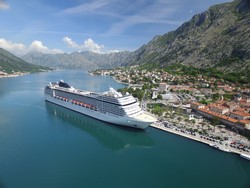Special steels and composite materials for lighter, more eco-friendly merchant ships
Propagation of cracks can have catastrophic consequences in large passenger and cargo ships. To address this issue, the EU-funded MOSAIC (Materials onboard: Steel advancements and integrated composites) investigated two solutions using steel and composite materials. Project partners introduced high-strength low-alloy (HSLA) steels and composite materials to replace specific structural parts of steel ships. HSLA steels with better mechanical properties and resistance to corrosion are targeted for large structural components in areas of stress concentration. Lightweight composites with resistance to corrosion are envisioned to replace piping or other non-critical parts. To find possible replacements for conventional marine steels, the MOSAIC team selected, procured and characterised five appropriate HSLA steels. It evaluated the feasibility of using composites in ship structures. This was done by examining a range of factors, from design to performance enhancement and costs. Researchers fully tested and characterised composite materials, qualified welding methods between different steels and studied an innovative technique for welding HSLA steels with conventional steel. They also performed fatigue crack growth, fracture toughness and corrosion tests on various welded steels using three different welding methods. Replacing materials in areas prone to cracks is expected to have substantial benefits in many areas. With fewer cracks, maintenance and repair costs will be reduced as will time out of service. Fewer defects will lead to an increase in safety. Lighter marine structures also result in lower fuel consumption, leading to both cost and environmental benefits in terms of reduced emissions. In all, MOSAIC should reduce the lifetime costs associated with production, operation and maintenance of large merchant ships.
Keywords
Ships, cracks, MOSAIC, high-strength low-alloy steels, composite materials





